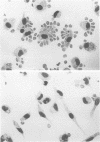Abstract
The chemiluminescence response of normal mouse peritoneal macrophages to parasitized erythrocytes isolated from mice 3 weeks after infection with Plasmodium berghei was examined. Only 4 of 12 animals showed positive responses, whereas 8 showed negative responses. Photomicrographs revealed that only in chemiluminescence-positive animals were parasitized erythrocytes attached to or phagocytized by macrophages. When lysed parasitized-erythrocyte cell suspensions were added to the peritoneal macrophages, chemiluminescence could be induced in all cases. The response was enhanced remarkably by the addition of very small amounts of immune serum. Normal macrophages activated in vitro by supernatant from antigen-stimulated spleen cells from immune mice showed much higher parasite-induced chemiluminescence responses than did nonactivated macrophages, especially in the presence of immune serum.
Full text
PDF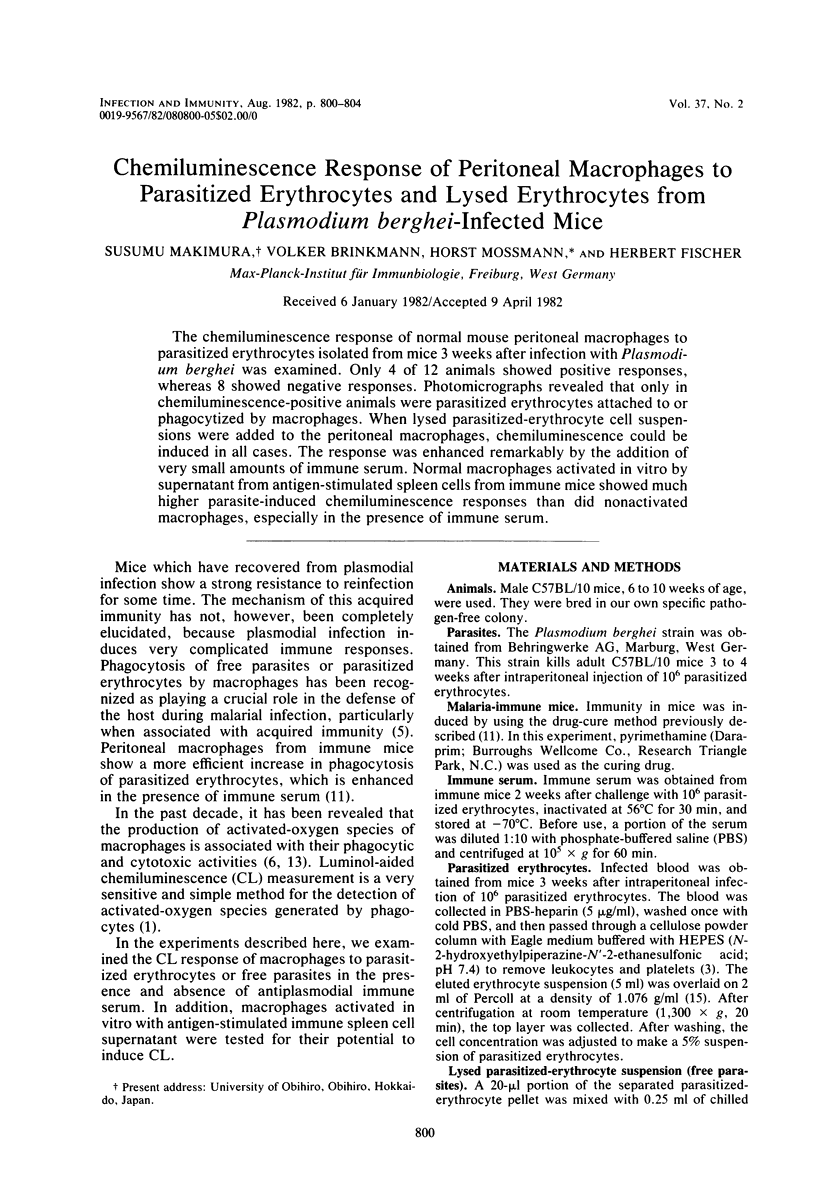
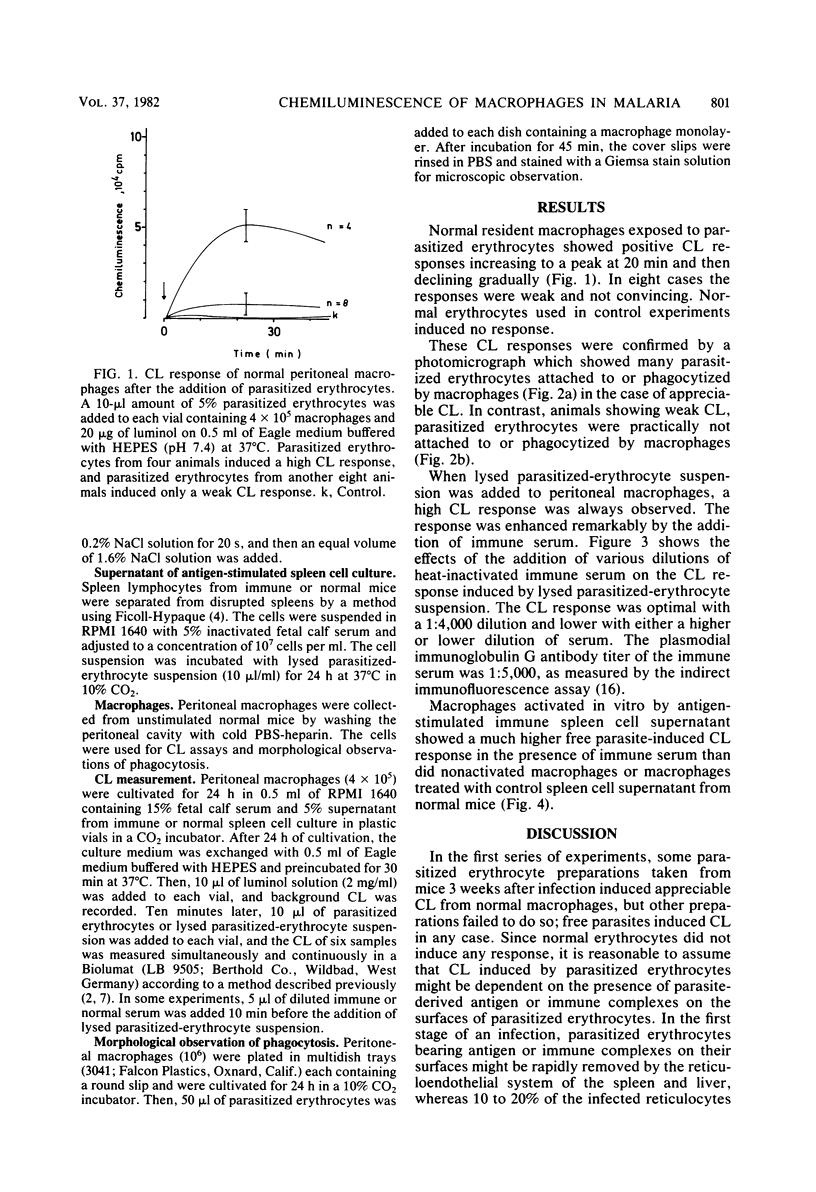
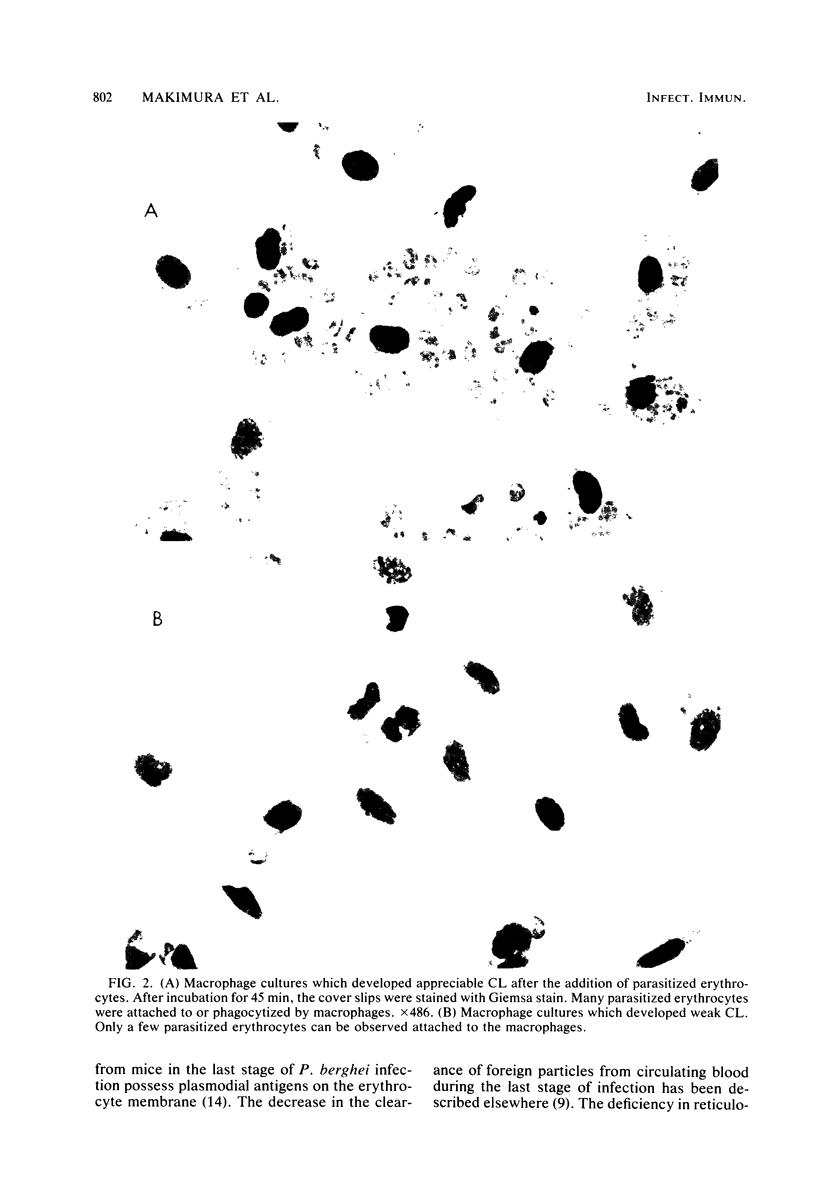
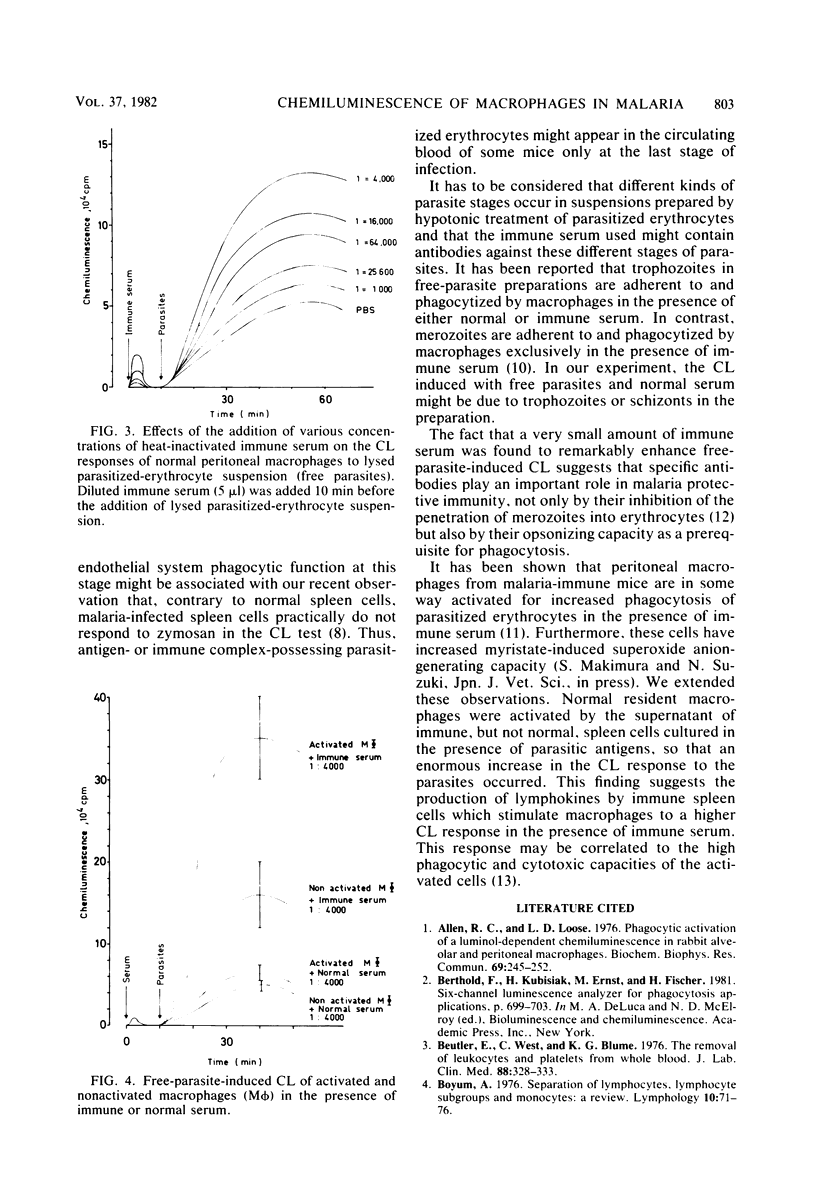
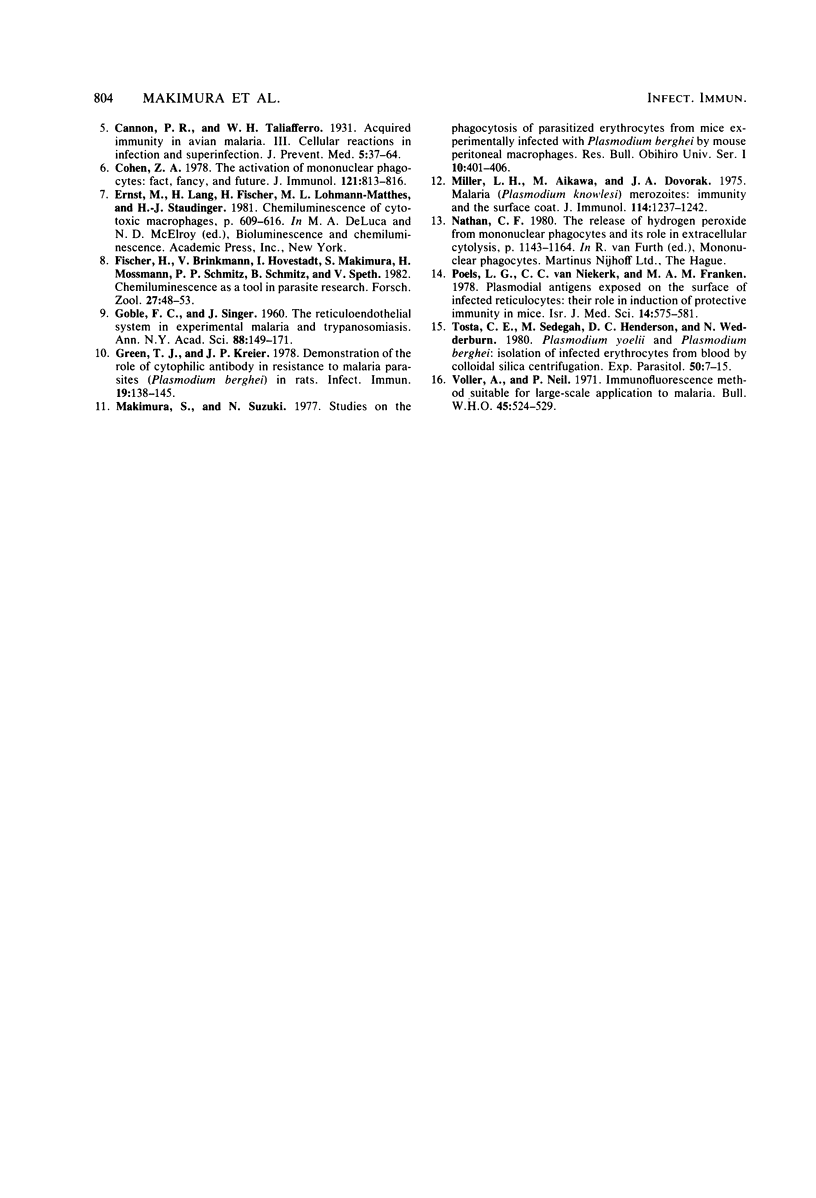
Images in this article
Selected References
These references are in PubMed. This may not be the complete list of references from this article.
- Allen R. C., Loose L. D. Phagocytic activation of a luminol-dependent chemiluminescence in rabbit alveolar and peritoneal macrophages. Biochem Biophys Res Commun. 1976 Mar 8;69(1):245–252. doi: 10.1016/s0006-291x(76)80299-9. [DOI] [PubMed] [Google Scholar]
- Beutler E., West C., Blume K. G. The removal of leukocytes and platelets from whole blood. J Lab Clin Med. 1976 Aug;88(2):328–333. [PubMed] [Google Scholar]
- Boyum A. Separation of lymphocytes, lymphocyte subgroups and monocytes: a review. Lymphology. 1977 Jun;10(2):71–76. [PubMed] [Google Scholar]
- Cohn Z. A. Activation of mononuclear phagocytes: fact, fancy, and future. J Immunol. 1978 Sep;121(3):813–816. [PubMed] [Google Scholar]
- GOBLE F. C., SINGER I. The reticuloendothelial system in experimental malaria and trypanosomiasis. Ann N Y Acad Sci. 1960 Jun 21;88:149–171. doi: 10.1111/j.1749-6632.1960.tb20016.x. [DOI] [PubMed] [Google Scholar]
- Green T. J., Kreier J. P. Demonstration of the role of cytophilic antibody in resistance to malaria parasites (Plasmodium berghei) in rats. Infect Immun. 1978 Jan;19(1):138–145. doi: 10.1128/iai.19.1.138-145.1978. [DOI] [PMC free article] [PubMed] [Google Scholar]
- Miller L. H., Aikawa M., Dvorak J. A. Malaria (Plasmodium knowlesi) merozoites: immunity and the surface coat. J Immunol. 1975 Apr;114(4):1237–1242. [PubMed] [Google Scholar]
- Poels L. G., Van Niekerk C. C., Franken M. A. Plasmodial antigens exposed on the surface of infected reticulocytes: their role in induction of protective immunity in mice. Isr J Med Sci. 1978 May;14(5):575–581. [PubMed] [Google Scholar]
- Tosta C. E., Sedegah M., Henderson D. C., Wedderburn N. Plasmodium yoelii and Plasmodium berghei: isolation of infected erythrocytes from blood by colloidal silica gradient centrifugation. Exp Parasitol. 1980 Aug;50(1):7–15. doi: 10.1016/0014-4894(80)90003-x. [DOI] [PubMed] [Google Scholar]
- Voller A., O'Neill P. Immunofluorescence method suitable for large-scale application to malaria. Bull World Health Organ. 1971;45(4):524–529. [PMC free article] [PubMed] [Google Scholar]



